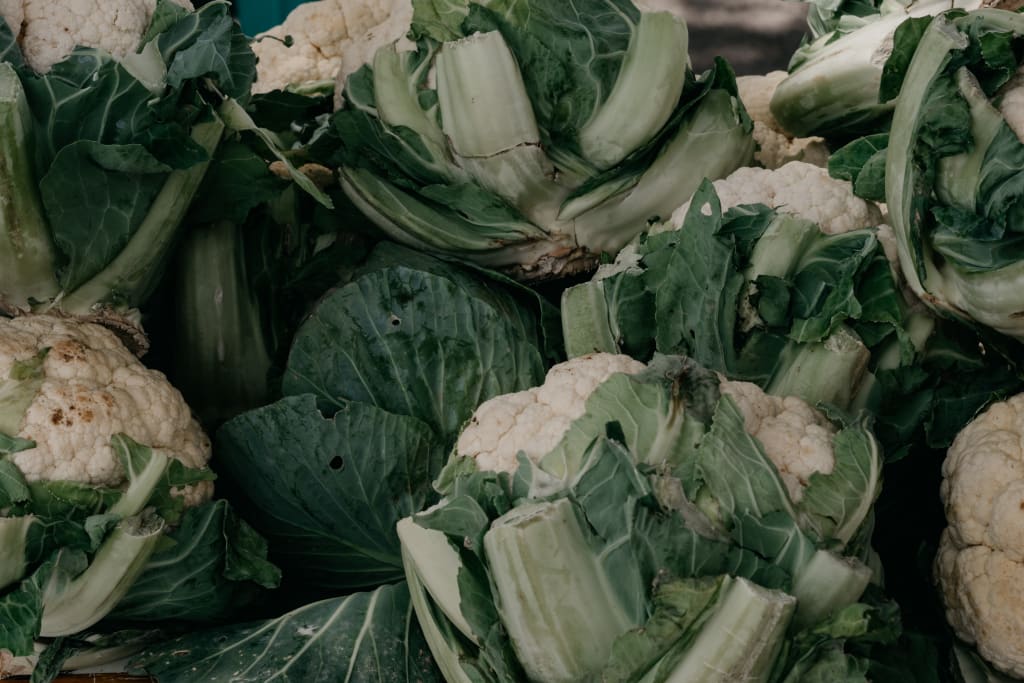Beyond Calories: Optimizing Fat Loss with Food Choices and Meal Distribution
The Basic Law of Thermodynamics and Caloric Balance

Note: The content below is written in a conversational style and is intended to provide valuable insights into optimizing fat loss. Remember to consult a healthcare professional before making any significant changes to your diet or exercise routine.
If you've read any of my past nutrition article or even attempted a diet of your own, you're probably familiar with the concept that weight loss ultimately boils down to calories in versus calories out. As long as you consume fewer calories than you burn and ensure an adequate protein intake, you can successfully lose weight and shed fat, regardless of the specific foods and meal timings. While this principle holds true from a scientific standpoint, it fails to acknowledge how different types of food and meal distribution can affect these variables. In this article, we'll explore three essential swaps you can make in your diet to accelerate fat loss and provide you with a sample meal plan to put it all into action.
The Basic Law of Thermodynamics and Caloric Balance
The basic law of thermodynamics states that energy cannot be created or destroyed; it can only be converted from one form to another. When it comes to weight loss, this law holds true, as you need to create a caloric deficit to burn stored fat. However, focusing solely on calories overlooks the impact that food choices and meal distribution can have on your body's response. While you can lose fat by eating processed foods within a caloric deficit, optimizing your food choices can further enhance the fat loss process.
The Impact of Food Choices on Fat Loss
The Thermic Effect of Food
One important factor to consider is the thermic effect of food, which refers to the calories your body burns to digest and metabolize the foods you consume. Research has shown that minimally processed, unprocessed foods generally require more energy expenditure during digestion than their processed counterparts. For example, a study comparing the thermic effect of two sandwiches—one made with whole grain bread and real cheddar cheese, and the other made with white bread and processed cheese—revealed that the minimally processed sandwich had a 50% higher thermic effect. This means that your body burns significantly more calories when digesting unprocessed foods, potentially contributing to more efficient fat loss.
Benefits of Unprocessed Foods
In addition to the thermic effect, unprocessed foods offer other benefits for fat loss. They tend to be richer in nutrients and fiber, which can promote satiety and keep you feeling fuller for longer. By opting for foods like oats, multigrain bread, and other minimally processed options instead of their refined counterparts like cereal and white bread, you not only provide your body with more essential nutrients but also enhance the efficiency of your metabolism.
A six-week controlled trial compared the effects of a diet consisting of less processed whole grain foods such as whole grain bread, brown rice, and steel-cut oats) versus a diet consisting of more processed refined grain foods (such as white bread, white rice, and instant oats). The study found that participants who consumed the less processed whole grain foods experienced greater improvements in body composition, including a reduction in body fat percentage, compared to those on the more processed refined grain diet.
By incorporating unprocessed foods into your diet, you not only optimize your body's energy expenditure during digestion but also provide it with essential nutrients and fiber that support overall health and satiety. This can help control cravings and prevent overeating, ultimately contributing to more effective fat loss.
The Importance of Meal Distribution
While food choices play a crucial role in fat loss, how you distribute your meals throughout the day can also impact your body's response and optimize fat burning. Two common approaches to meal distribution are the front-heavy approach and the back-heavy approach.
Front-Heavy Approach vs. Back-Heavy Approach
The front-heavy approach involves consuming a larger portion of your daily calories earlier in the day, with breakfast and lunch being the most substantial meals. This approach aligns with the body's natural circadian rhythm and can have several benefits for fat loss. Research suggests that front-loading your calories may enhance insulin sensitivity, improve nutrient partitioning, and increase fat oxidation throughout the day.
On the other hand, the back-heavy approach involves consuming a larger portion of your calories later in the day, with dinner being the most significant meal. While this approach is commonly practiced, especially in Western cultures, it may not be as optimal for fat loss. Studies have shown that consuming a majority of your calories later in the day can lead to poorer blood sugar control, reduced insulin sensitivity, and increased hunger and cravings, which can hinder fat loss efforts.
Energy Levels and Hunger Control
Another advantage of the front-heavy approach is its potential to provide sustained energy levels throughout the day. By consuming a well-balanced, nutrient-dense breakfast and lunch, you can fuel your body and maintain stable blood sugar levels, reducing the likelihood of energy crashes and cravings later in the day. This can help control your appetite and make it easier to adhere to your caloric deficit.
In contrast, consuming a large meal at dinner and minimal calories throughout the day can leave you feeling hungry and unsatisfied, increasing the risk of overeating or indulging in unhealthy snacks in the evening.
Choosing Satiating Foods for Appetite Control
To further optimize fat loss, it's essential to choose foods that are satiating and keep you feeling fuller for longer. The satiety index is a tool that measures how different foods affect satiety levels. Foods with a higher satiety index are more filling and can help control appetite and prevent overeating.
Swapping for More Satiating Options
When designing your meals, consider incorporating foods that have a higher satiety index. These include protein-rich foods such as lean meats, poultry, fish, eggs, and plant-based protein sources like legumes and tofu. High-fiber foods like fruits, vegetables, whole grains, and nuts also contribute to satiety. By prioritizing these foods in your meals, you can enhance feelings of fullness and satisfaction, making it easier to stick to your caloric deficit and achieve your fat loss goals.
Sample Meal Plan for Effective Fat Loss
Here's a sample meal plan that incorporates the principles discussed above:
• Breakfast: Protein Pancakes
• Ingredients: Whole grain oats, protein powder, egg whites, almond milk.
• Method: Blend oats into flour, mix with protein powder, egg whites, and almond milk. Cook on a non-stick pan.
• Benefits: This breakfast is packed with protein, fiber, and whole grains, providing sustained energy and promoting feelings of fullness.
Snack: Greek Yogurt with Berries
Ingredients: Greek yogurt, mixed berries.
Method: Combine Greek yogurt with a handful of mixed berries.
Benefits: Greek yogurt is rich in protein and calcium, while berries add antioxidants and fiber. This snack helps satisfy hunger and provides a nutrient boost.
Lunch: Grilled Chicken Salad
Ingredients: Grilled chicken breast, mixed salad greens, cherry tomatoes, cucumber, bell peppers, olive oil and vinegar dressing.
Method: Toss together the salad greens, cherry tomatoes, cucumber, and bell peppers. Top with grilled chicken breast and drizzle with olive oil and vinegar dressing.
Benefits: This salad is a balanced combination of protein, fiber, and healthy fats. It keeps you full and provides essential nutrients.
Snack: Apple Slices with Almond Butter
Ingredients: Apple, almond butter.
Method: Slice the apple and serve with a tablespoon of almond butter for dipping.
Benefits: Apples are high in fiber and provide natural sweetness, while almond butter adds healthy fats and protein. This snack satisfies cravings and provides a good balance of nutrients.
Dinner: Baked Salmon with Quinoa and Steamed Vegetables
Ingredients: Salmon fillet, quinoa, mixed vegetables (broccoli, carrots, cauliflower), lemon, herbs and spices.
Method: Season the salmon with herbs and spices, then bake it in the oven. Cook quinoa according to package instructions. Steam the mixed vegetables and squeeze fresh lemon juice over them.
Benefits: Salmon is a great source of omega-3 fatty acids and protein. Quinoa provides complex carbohydrates and fiber, while the steamed vegetables add vitamins and minerals. This dinner is satisfying and nourishing.
Evening Snack: Celery Sticks with Hummus
Ingredients: Celery sticks, hummus.
Method: Serve celery sticks with a side of hummus for dipping.
Benefits: Celery is low in calories and high in fiber, while hummus offers protein and healthy fats. This snack is light yet satisfying.
Remember, this is just a sample meal plan, and individual nutritional needs may vary. It's important to adjust portion sizes and ingredients based on your specific goals and dietary requirements. Consulting with a registered dietitian or nutritionist can provide personalized guidance for effective fat loss while ensuring optimal nutrition.
Additionally, incorporating regular physical activity and staying hydrated are essential components of any successful fat loss journey. Be sure to engage in a combination of cardiovascular exercises, strength training, and flexibility exercises to support overall health and boost fat burning.
Always listen to your body, prioritize whole, unprocessed foods, and make sustainable changes to your lifestyle. With patience, consistency, and a balanced approach, you can achieve your fat loss goals and maintain a healthy lifestyle in the long term.
About the Creator
Majid Naz Khan
Life is Not To Waste.
Enjoyed the story? Support the Creator.
Subscribe for free to receive all their stories in your feed. You could also pledge your support or give them a one-off tip, letting them know you appreciate their work.





Comments
There are no comments for this story
Be the first to respond and start the conversation.